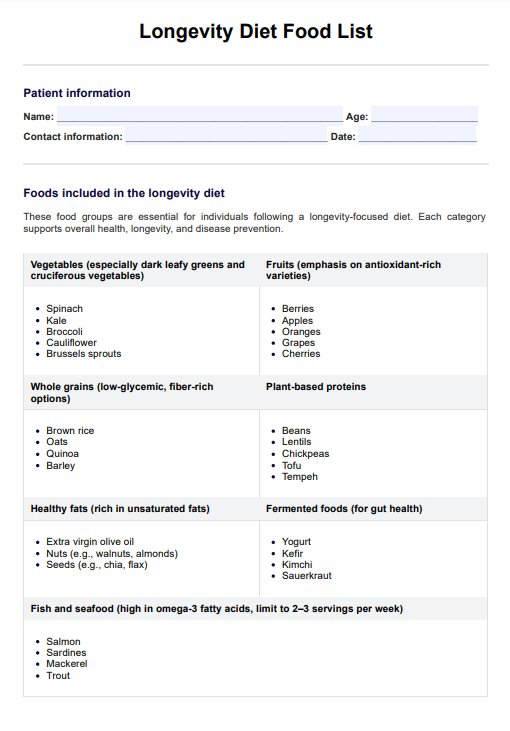Foods rich in nutrients and antioxidants, like dark leafy greens, berries, nuts, and olive oil, are excellent for longevity. These foods support heart health, reduce inflammation, and lower the risk of age-related diseases.

Longevity Diet Food List
Help clients explore foods that promote healthy aging with our Longevity Diet Food List Template.
Longevity Diet Food List Template
Commonly asked questions
A good breakfast for the longevity diet might include oatmeal with berries, nuts, and a drizzle of olive oil or chia seeds for healthy fats. Adding leafy greens to a smoothie or a small portion of whole-grain toast with avocado also provides essential nutrients for a healthy start to the day.
Eggs can occasionally be consumed on the longevity diet, particularly for those over 65 who need additional protein. However, the diet primarily focuses on plant-based proteins, so eggs are best used in moderation.
EHR and practice management software
Get started for free
*No credit card required
Free
$0/usd
Unlimited clients
Telehealth
1GB of storage
Client portal text
Automated billing and online payments











